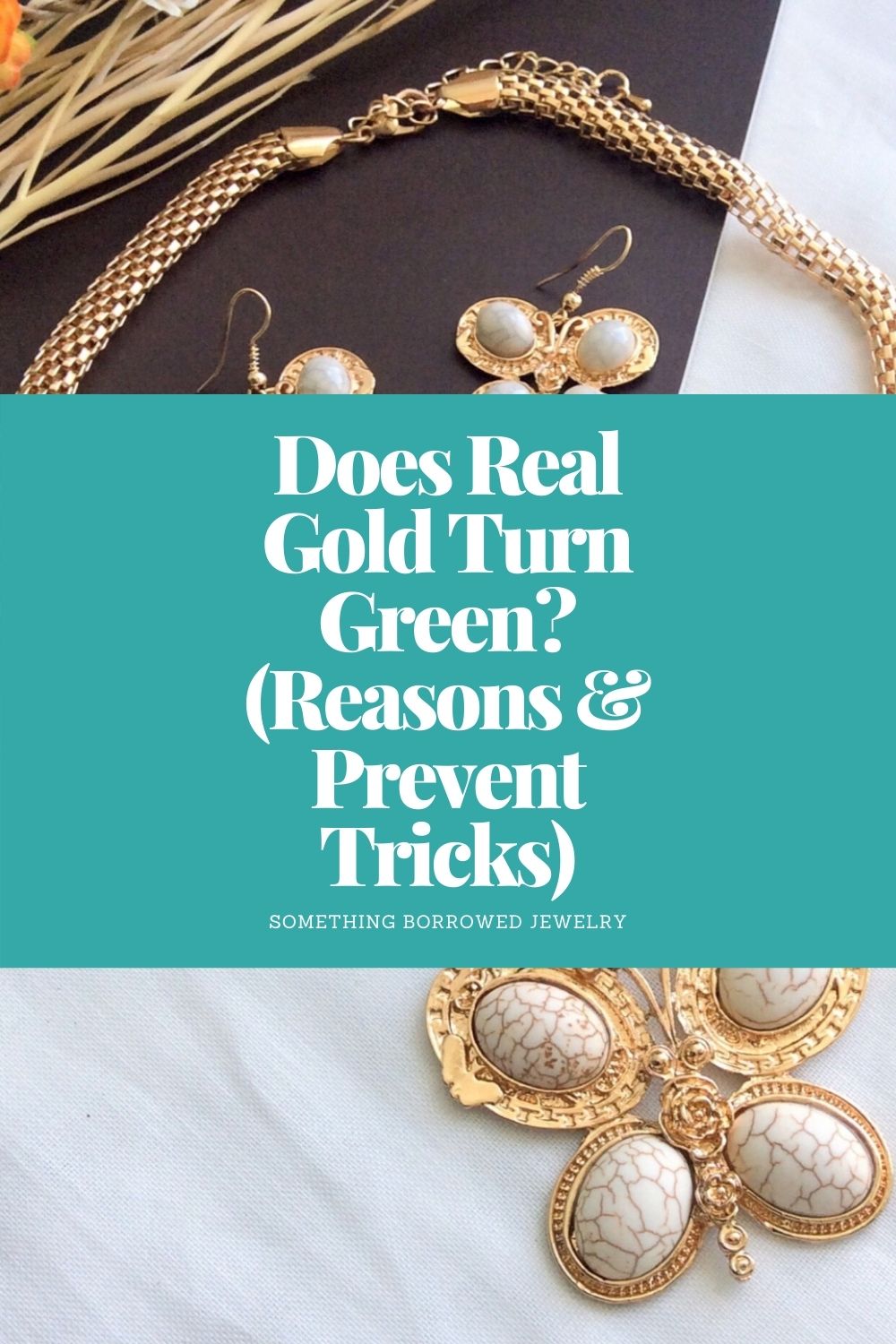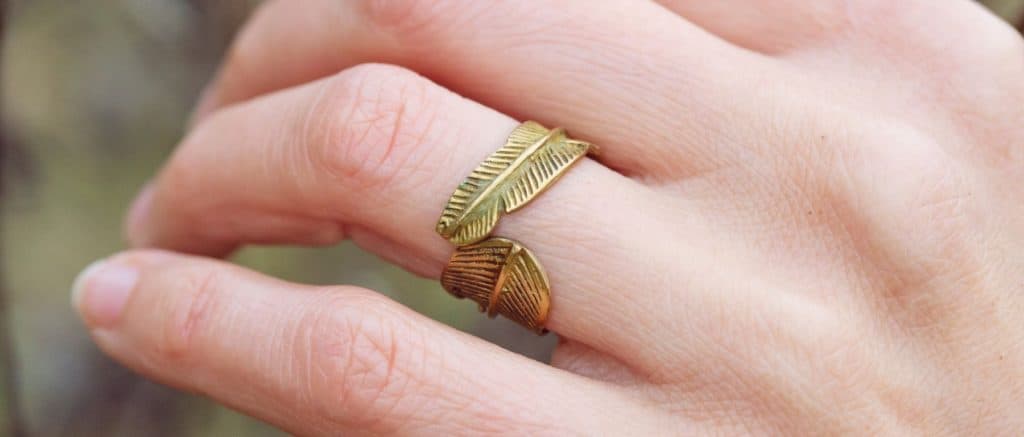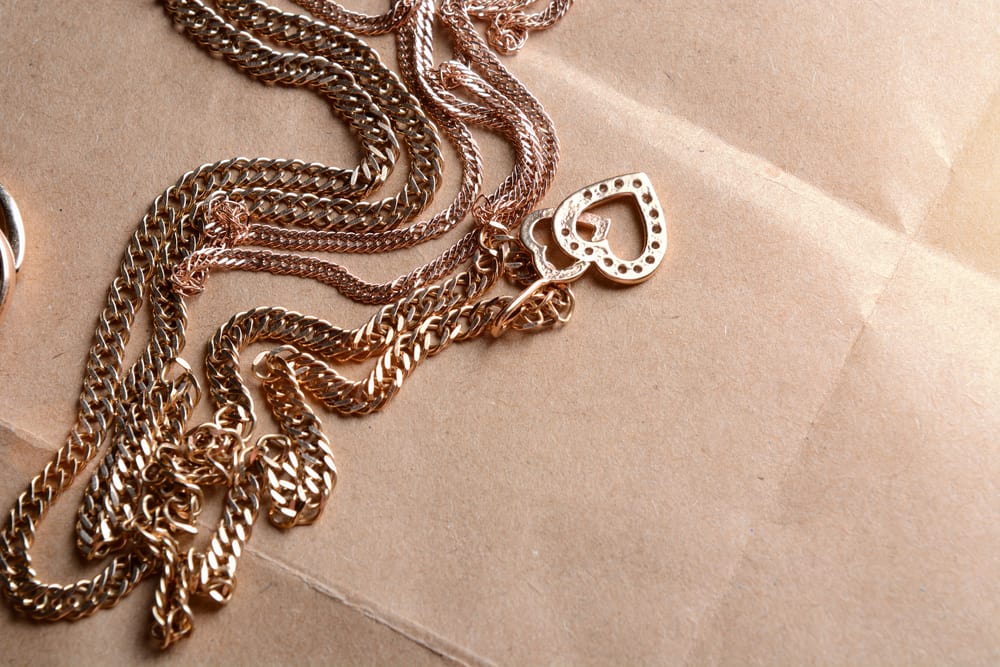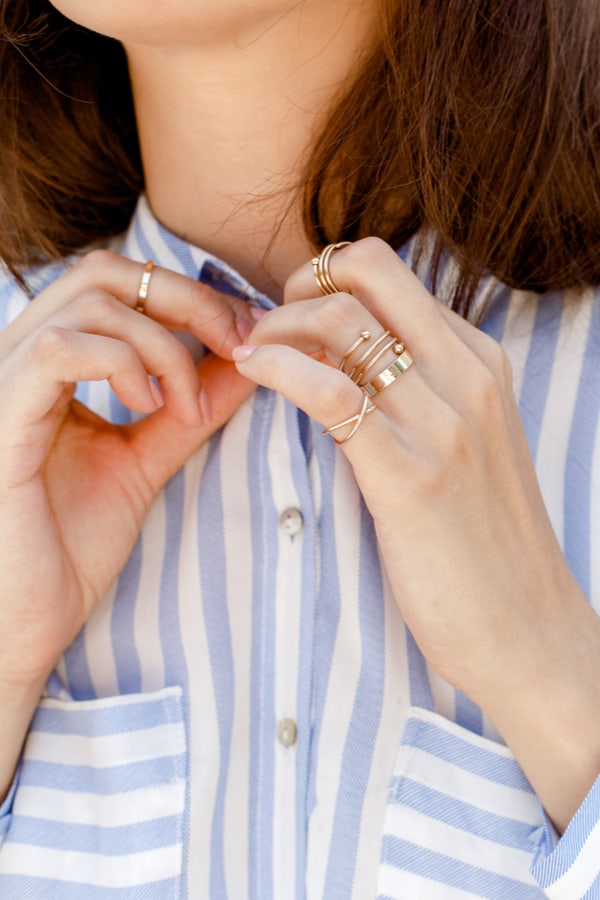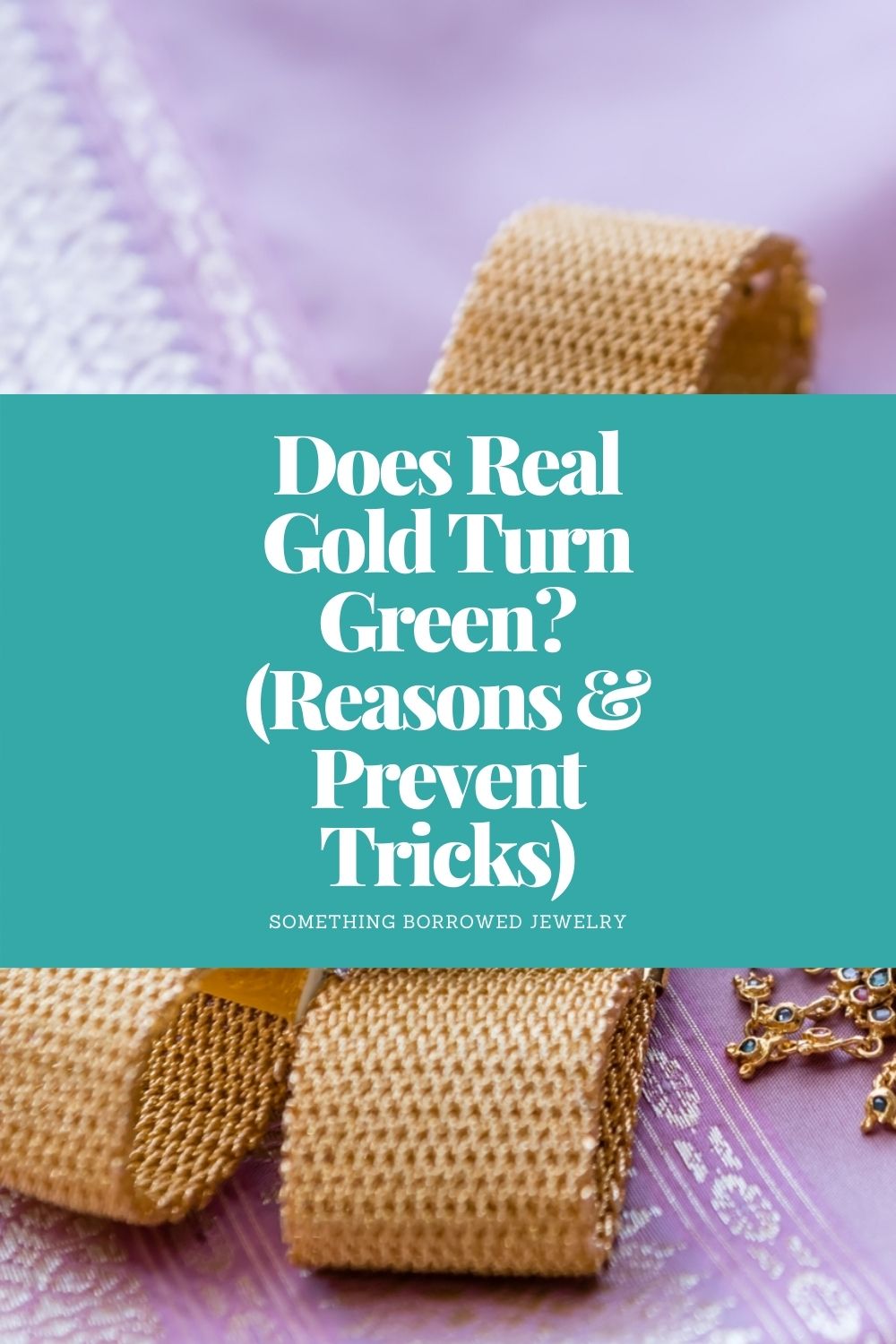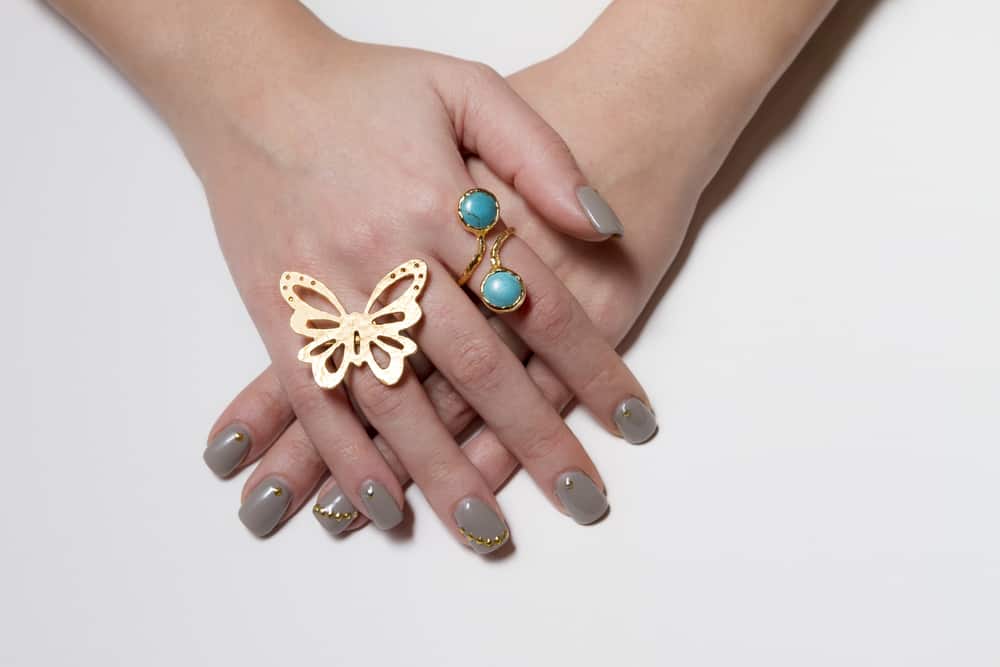
Many people can’t differentiate between pure and fake gold, so there is often a dilemma does real gold turn green. It is a matter of chemistry. Pure gold never combines with oxygen, so it always stays shiny and doesn’t rust, tarnish, or turn green over time.
If you notice any of these changes in your jewelry, you can be sure that it is not made of solid gold. In fact, you should know that you actually can’t find jewelry made of 24K gold, but only variations with some percentage of alloy. The more Karats your gold has, there is lower chance it will turn green. Let’s see.
Does Real Gold Turn Green?
24k gold
Pure 24K gold is biocompatible and the least reactive element that hardly reacts with other chemicals, never changes color, and always stays shiny. It is also a hypoallergenic metal that never affects your skin color.
Unfortunately, it is too soft, and you can’t use it to make jewelry. Different metals added sometimes change jewelry color and leave traces on the skin, so you don’t need to worry before checking your piece.
However, you can be sure that your jewelry is fake when your skin turns green or even black after the first wearing.
18K gold jewelry
As you have already known, gold jewelry always contains some alloys, and the only question is in what percentage. For instance, the most popular and workable 18K vibrant yellow gold has 75% pure gold and 25% alloy, mainly copper or nickel.
These metals cause green discoloration under certain circumstances. Even though the amount of added metal is sometimes minimal to cause skin discoloration, you can notice green traces when your skin is too acidic.
14K gold jewelry
Unlike pure gold, your 14K gold jewelry will probably tarnish green after a while. Besides 14 parts pure gold, it contains ten parts alloy like silver, palladium, bronze, copper, zinc, and nickel. These metals oxidize in contact with air and cause skin discoloration.
Always ask about jewelry alloys since nickel leaves traces on skin quickest, particularly when exposed to detergent and soap chemicals.
Added copper can cause greenish traces on the skin after a while, while black marks tell you that you have gold jewelry with a certain amount of silver as an alloy.
Reasons for Gold Discoloration
There are a few primary reasons for gold discoloration that change the original orangish-yellow color of this precious metal into a different shade.
Metallic abrasion
Your make-up will probably cause gold discoloration over time because of hard metal content. If cosmetics you wear contain metals harder than gold, they will separate when coming to contact with this precious metal.
As a result of the chemical reaction, your skin will absorb the dark, powdery substance created during this process. In the end, you will notice dark spots at the place where jewelry is in contact with your skin.
Oxidation
As you have probably known, gold never corrodes. However, you can’t find jewelry made of pure gold since it is too soft, so jewelers regularly mix this precious metal with an alloy to make it suitable for making jewelry.
Your jewelry contains a different percentage of silver, nickel, or copper besides gold in most cases. All these metals naturally oxidize and become dark when exposed to oxygen for a long. Perspiration and warmth will accelerate this process, and your piece of jewelry will change the original color.
Corrosion
If you enjoy swimming in a pool, you should take off your jewelry before entering. Pool water contains high levels of chlorine that is corrosive to metals and causes gold discoloration. As a result, you will notice darkish changes in your skin. Most household cleaners have the same effect.
Low-quality plating
You can expect this porous layer to change over time when choosing less expensive jewelry with a rhodium-plated surface thick approximately 0.25 to 0.5 microns. Consequently, different particles can sift between the gold and rhodium plating and affect color changes.
You can solve this problem by re-plating the gold jewelry or adding about $100 for plated jewelry with a platinum layer.
You will have the same problem with gold-plated jewelry, particularly when your piece is coated with a very thin gold layer. Such jewelry will tarnish over time after the gold coat disappears and base metal appears on the surface.
Reasons Why Gold Turns the Skin Green
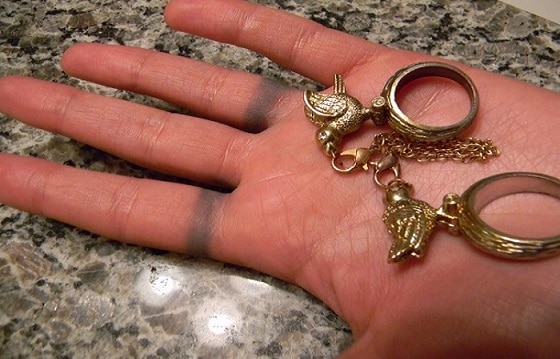
Anemia
Iron levels in your body affect your skin pH levels. Therefore, more acidic skin will be prone to discoloration, and you can notice green traces on it after wearing gold jewelry that contains nickel or copper.
Contact dermatitis
This condition often results from an allergic reaction to alloy abrasion. On the other hand, gold is a common allergen, and one of the dermatitis symptoms is green discoloration.
It appears mainly on fingers when you don’t have a habit of taking off the ring while taking a shower or using chemicals.
Sulfur
Hormonal changes and some medications like antibiotics and chemotherapy increase sulfur-containing amino acid production.
They immediately react with alloys from jewelry, particularly copper and nickel, and often leave green traces on the patient’s skin. Sulfur-based cremes and shampoos will have the same effect.
Copper
When you have naturally acidic skin, copper from your gold jewelry will oxidize and form copper oxide. When you sweat intensely, you can sometimes notice dark green traces on your skin where it is directly in contact with jewelry.
Nickel
Gold jewelry containing nickel will often cause greenish-black skin discoloration. Nickel is a base metal in gold-plated jewelry or an alloy of low-quality gold ones. Once the gold-plating wears off, the nickel-base will become visible and cause ugly skin discoloration.
Ways to Prevent Gold Jewelry from Discoloration
There are ways to prevent your gold jewelry from turning green. You should do your best to do that, especially if you are highly sensitive to alloys.
- Avoid buying gold jewelry that contains copper or nickel as an alloy
- When you have already had a piece of gold jewelry with a certain percentage of copper or nickel, you should keep it for special occasions and avoid wearing it daily
- Choose rhodium-plated jewelry and protect your piece from tarnishing
- Apply the clear nail polish to the ring inside to create a barrier between the metal and your skin
- Keep your jewelry clean and regularly remove dirt from the surface to prevent oxidation
- Always wear jewelry on the dry skin and take it off when bathing, washing hands, and swimming
- Take off your jewelry before using the swimming pool to prevent intense chemical reaction between chlorine from water and copper alloy in gold
- Never wear easily tarnished piece of jewelry during hot days to avoid green discoloration because of intensely perspiration
- Remove jewelry before using cleansers, particularly those that contain bleach
- Avoid applying perfume and lotion before wearing jewelry
Although dark greenish traces on your skin are ugly, they are usually harmless and never permanent. It will be enough to wash your hand with soap and remove these spots.
Sometimes, you will need to use lemon juice, baking soda, and a brush to get rid of persistent discoloration.
When your gold jewelry contains a high copper percentage, the most reliable solution is to mix hot water, one cup of vinegar, and one tablespoon of salt. Then, you can clean green discoloration from your skin with a cotton cloth soaked in this liquid.
Ways to Prevent Skin Discoloration
Gold quality
The most efficient way to avoid your jewelry to leaves ugly colored traces on your skin is to purchase high-quality pieces made of 18K gold.
Even though 14K and even 12K gold jewelry are beautiful, they consist of a high amount of alloy that causes jewelry tarnishing and skin discoloration after a while.
Gold type
Quality yellow gold rarely tarnishes, so it will rarely cause the appearance of green traces on your skin. On the other hand, rose gold contains alloys that turn green more often.
Thanks to rhodium plating, white gold jewelry won’t discolor your skin. However, the rhodium layer will wear out over time, and your jewelry will start tarnishing and leaving dark spots on your skin.
Alternatively, you can buy jewelry made of platinum. Its price is high, but this hypoallergic material never tarnishes. When you look for a unique option, you should choose titanium jewelry. It won’t cause stains on your skin for sure.
Alloy type
Since 18K gold jewelry is pretty expensive, you can solve your problem by purchasing a piece made of a lower quality gold mixed with the right alloy type.
For instance, if you notice greenish or blackish traces on your finger, you should get it checked. The jeweler will find out what metal that particular piece contains, so you can avoid such a mixture next time when buying jewelry.
Summary
High-quality gold jewelry won’t leave green marks on your skin. The rule of thumb is that you have fewer chances to experience this inconvenience when wearing jewelry with a higher gold percentage. Added alloys often react to skin acidity and chemicals and cause the jewelry color to change over time.

